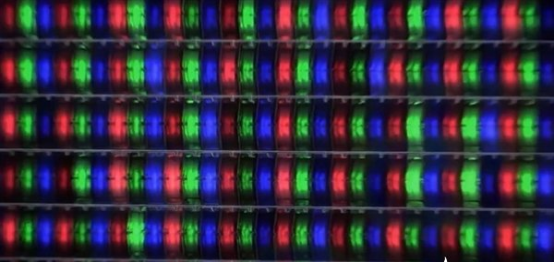What is the difference between different panels?
Nowadays, if you have a demand for chasing dramas and movies, you usually use a tablet to watch it. Because the tablet is small and light, you can sleep on the bed or on the sofa.
But if we allow ourselves to watch the video in the most comfortable posture, we may be obese and hunched over.
Just like bitter medicine, such a comfortable posture is actually not good for our health.
And no matter the mobile phone, tablet or laptop, their screen is bigger, will it give us a better look than the TV screen? If you think about it this way, it's better to buy a TV and put it at home.
But once I walked into the mall and started to choose TV, I do n’t know if you have the same dizzy process as me: why are all TV screens, why are there LCD, LED, OLED, ULED, QLED, SLED, GLED ... these look There are similar things with ED.
Are they all the same? And why should we use the models marked with different letters? How are they different? If you have such questions, this article is for you to answer your questions today.
Let ’s simplify first, and now there are actually two types of TV display panels on the market.
One is the most commonly used liquid crystal LCD panel, which is also used in most TV products.
One is the current OLED panel, which is more common in the mobile phone field, but basically exclusive to high-end TVs.
Liquid Crystal Screen (LCD)
The first thing to talk about is the LCD screen. Its full name is Liquid Crystal Display, so the Chinese translation is the LCD screen.
In fact, the LCD screen is just a general term. In order to avoid confusing everyone at the beginning of the article, here we first introduce the principle of the common TFT-LCD panel.

Since we want to see the picture displayed on the TV panel, we must first trace the source, where did the light come from.
The LCD panel needs a backlight layer to emit white light, and in order to make the scattered light more directional and softer, it needs to pass through several films.
Then there is the first layer of vertical polarizer, which can make the light in a fixed direction become polarized light in the vertical direction, in order to control the light that can pass through later;
The light after polarized light in the vertical direction needs to pass through the liquid crystal layer with electrode layers on both sides. The liquid crystal can help the light to change from vertical to horizontal direction under the action of electric field force.
The next stop of the light is the color filter. After changing the direction, the light passes through the filter horizontally, and finally becomes horizontally polarized light. After passing through the horizontal polarizer, the corresponding color can be displayed.
If you do not want to display this color, as long as the liquid crystal does not change direction, the light cannot pass through the horizontal polarizer, so it will not be displayed.
Since the pixels are small enough, the content of different colors can be displayed through the principle of the three primary colors.
In addition to showing the color, the strength of the color is also a part of forming the rich color of the picture, and the method adopted by the liquid crystal panel is to add a layer of TFT film substrate on the electrode layer.
Each sub-pixel on the TFT substrate has a transistor that can adjust the brightness of the light, then the brightness of the monochromatic light can be achieved, and the adjustment of the brightness of each pixel finally shows that we see a gorgeous picture on the TV .
Since the light must come from the backlight layer, the backlight layer is required to provide an excellent backlight source. The earliest LCD TV backlight layer used CCFL (Cold Cathode Fluorescent Lamp).
You can understand it as a row of side-by-side fluorescent lamps, so this design will result in poor color gamut, large power consumption, and large volume, which are basically not seen at present.
What is the current LCD TV? That is, LED light-emitting diodes are used as light sources, so that the design can have a better color gamut, longer life, a larger brightness adjustment range, and more uniformity, and less power consumption.
Finally, let me briefly introduce that LCD panels mainly include IPS hard screens and VA soft screens. The former has a faster response speed, a larger viewing angle, and more accurate colors, but the light transmittance is slightly weaker; The rate is high, but the response is slow.
Organic Light Emitting Diode (OLED)
After reading the LCD panel, the principle is dizzy. The OLED panel is much simpler. It is the abbreviation of Organic Light-Emitting Diode.
Since the organic light-emitting layer can emit light by itself, the OLED does not need a backlight layer and a polarizing plate, and only needs to sandwich the organic light-emitting layer between two electrodes, and can emit light by meeting positive and negative electrons in the organic layer.
Here we simply add that OLED has two main development directions, one is passively driven PMOLED, and the other is AMOLED, which is the common OLED screen on our mobile phones.
If you want to know more, our website has product specifications for panels, you can go to ALLICDATA ELECTRONICS LIMITED to get more information

